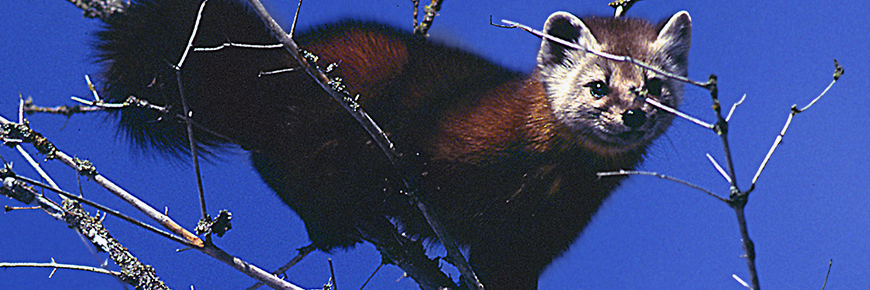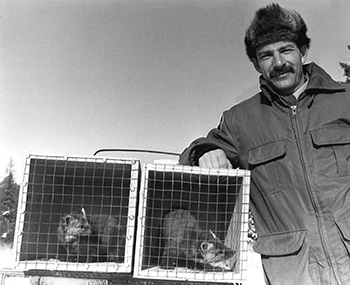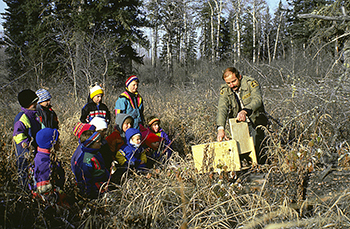
American marten reintroduction
Riding Mountain National Park
Long before Riding Mountain National Park was established, the American marten, Martes americana, commonly known as the pine marten, used to roam the area. Riding Mountain House Trading Post’s historical fur records show that marten pelts were traded in the early 1900s. The American marten were prized by trappers for their highly valued fur which, along with loss of habitat due to forestry, lead them to become extirpated in this area. There had been no recorded sightings of the American marten since the establishment of the park in 1933.

Flash forward to 1991, Riding Mountain had been a park for over 50 years when a proposal was initiated in order to reintroduce the American marten into the area. Evaluations of habitat and prey base for the American marten were conducted before the release. The preferred habitat of the American marten is mature and old coniferous and mixed forests. Large living and dead standing trees are available for shelter and as cover from bird predators. Park staff concluded that an abundant prey base exists for the American marten within the park, including squirrels, voles, mice, birds, and insects.
Whirlpool Lake area was chosen as the release site because of its easy access, suitable habitat, and the potential for dispersal control, which is a mechanism to ensure the animals stay in the area. Park staff decided to use a hard-release method. This involved opening the cage, releasing the marten, and monitoring until it reached cover.
Over the course of 3 years, park wardens released 68 American martens (37 males and 31 females) into the park. The martens were live trapped in Duck Mountain Provincial Park and brought to Riding Mountain where their state of health, age, and sex were checked.
During the first and second year of the reintroduction, 5 and 8 martens (respectively) were radio collared and monitored in order to determine the home range size for the martens. It was found that the female home range was consistently smaller than the male home range at an average of 7.2km2 compared to 8.9km2.

Our staff continue to monitor the American marten within the park. Throughout a nine-year winter wildlife track survey, a total of 760 observations of the American marten were recorded. The annual number of observations from 2009 until 2017 has continued to grow steadily from 34 to 102. This is further proof that the American marten have been successfully reintroduced into Riding Mountain National Park.
Do you want to see an American marten? The most likely places to spot a marten would be in older coniferous forests or mixed wood forests, such as along the north shore of Clear Lake, the Moon Lake area, or the Whirlpool Lake area. The American marten is a small animal that prefers deep brush, therefore spotting one can take patience and a bit of luck.
Fun Facts: American Marten
- The American marten is often used as an indicator of forest ecosystem integrity because they rely on food sources found in mature coniferous forests and they do not reside in burned or clear-cut forest areas.
- The American marten looks extremely similar to the fisher, Pekania pennanti. You can tell them apart by their size and the shape of their faces. The American marten is smaller than the fisher and has a more pointed face.
- During the winter, the soles of a marten’s feet are covered with fur.
- The American marten is a solitary animal and only comes together with members of the opposite sex during mating season in late July, early August.
- Young are born in March or April in dens, 8-9 months after mating.The American marten is one member of the weasel family that experiences delayed implantation which allows the young to be born during spring when there is lots of food available and the weather is warm.
- The American marten is a generalized predator, meaning they eat whatever they can catch, typically squirrels, voles, mice, birds, insects, and even fruit. The Marten hunts by looking under downed trees and, in the winter, by diving beneath the snow in tunnels created by squirrels.
- In the spring and summer, the American marten is active and hunts all day, particularly at daybreak and dusk, but as the temperatures drop, the marten’s activity level decreases and they become less active in the evenings and at night.
- The American marten can climb trees, in which their tails help them balance, but they do most of their hunting on the ground rather than in the trees.
- Date modified :